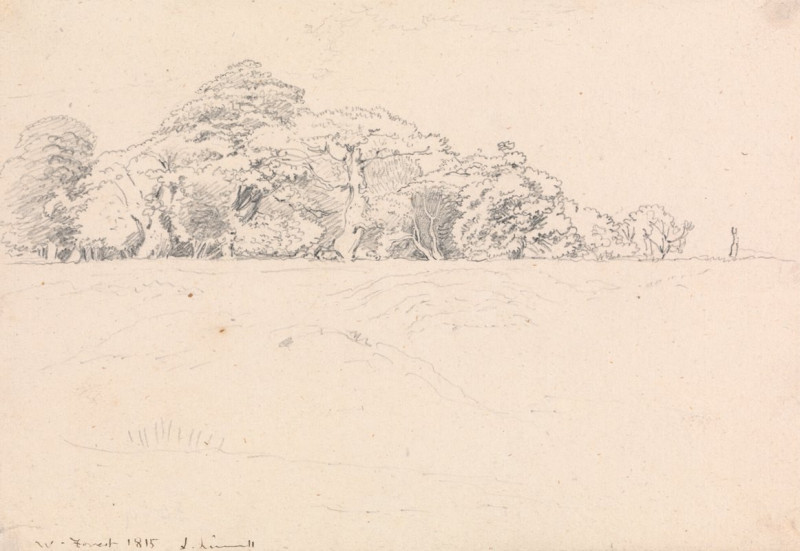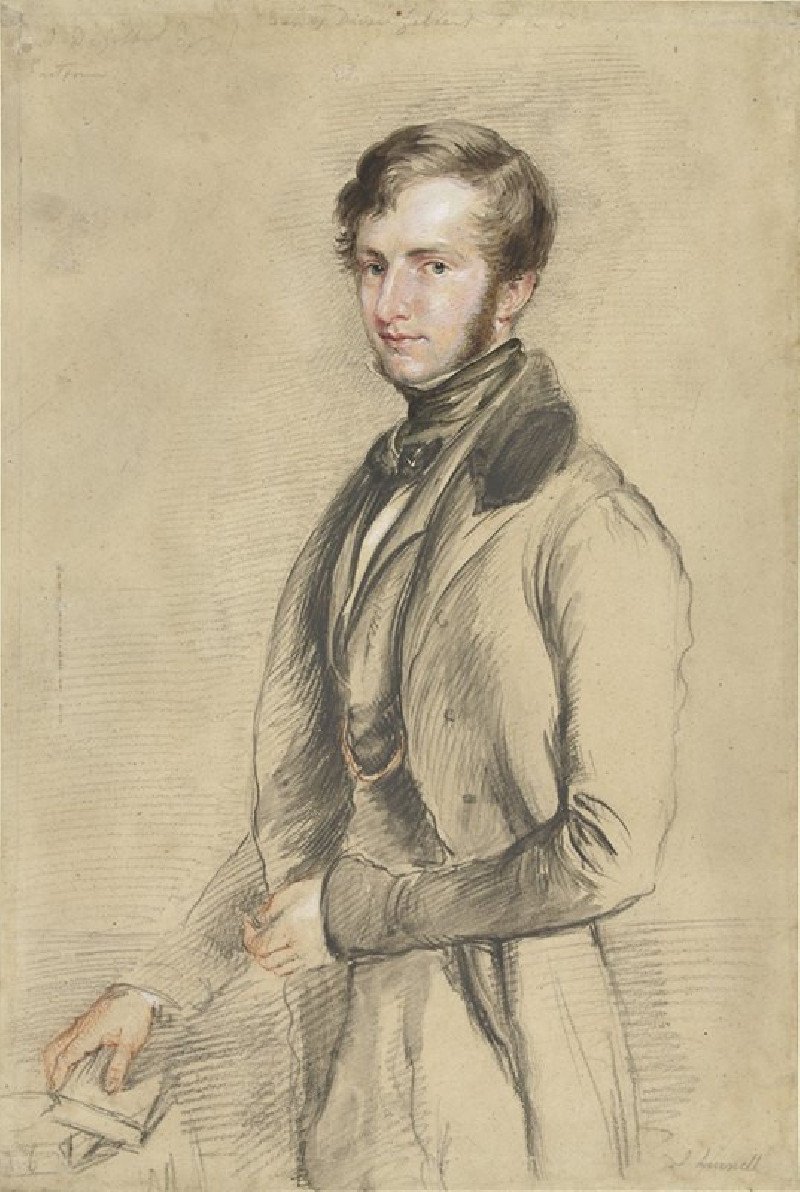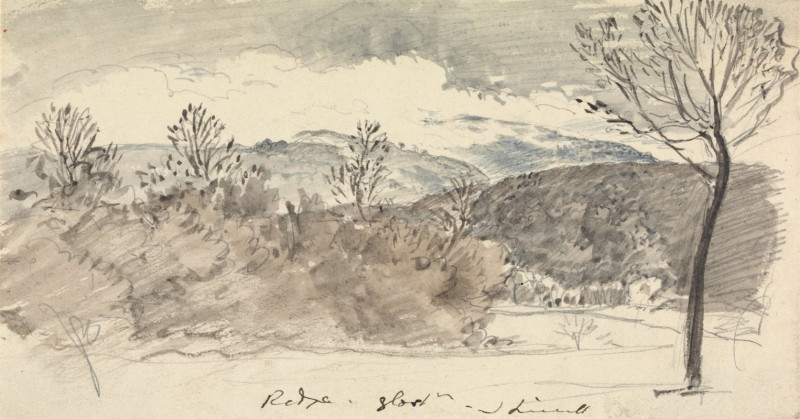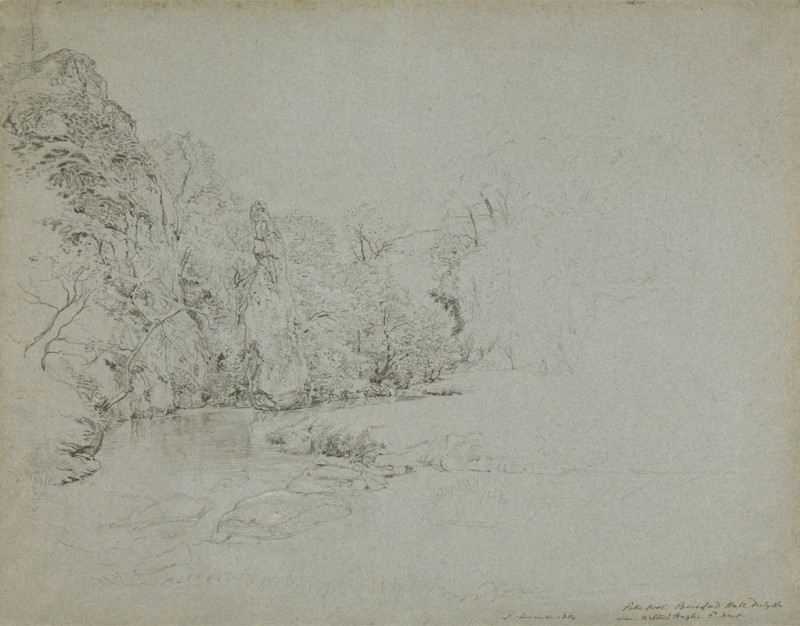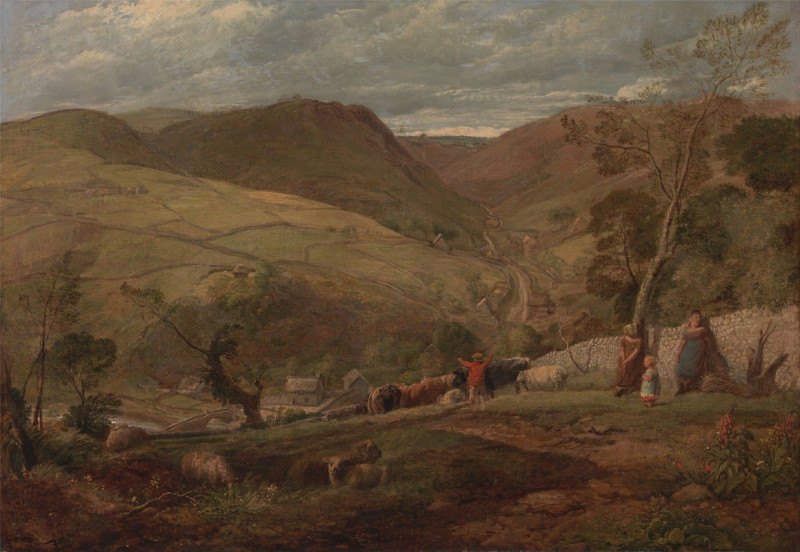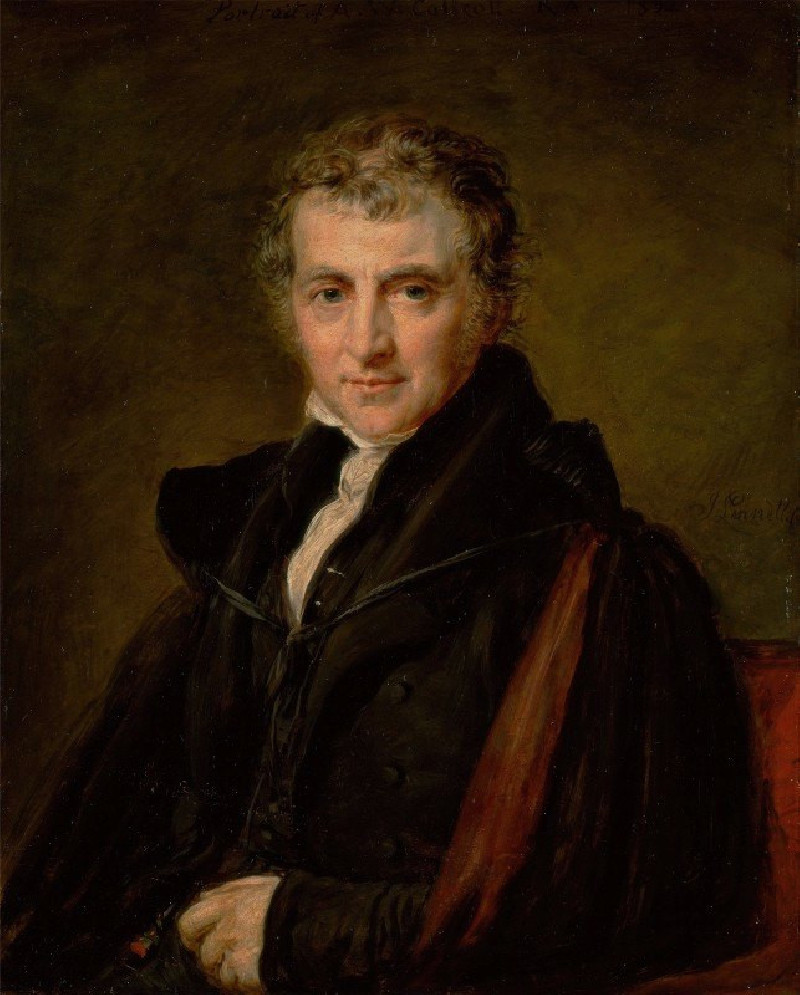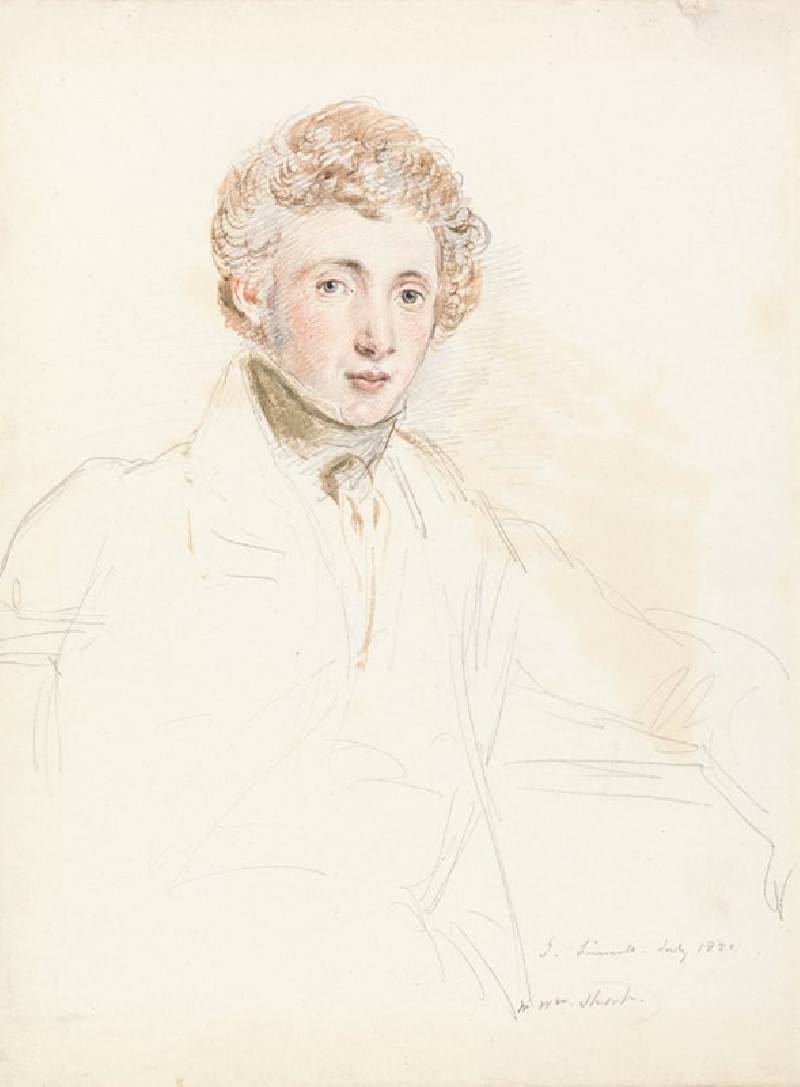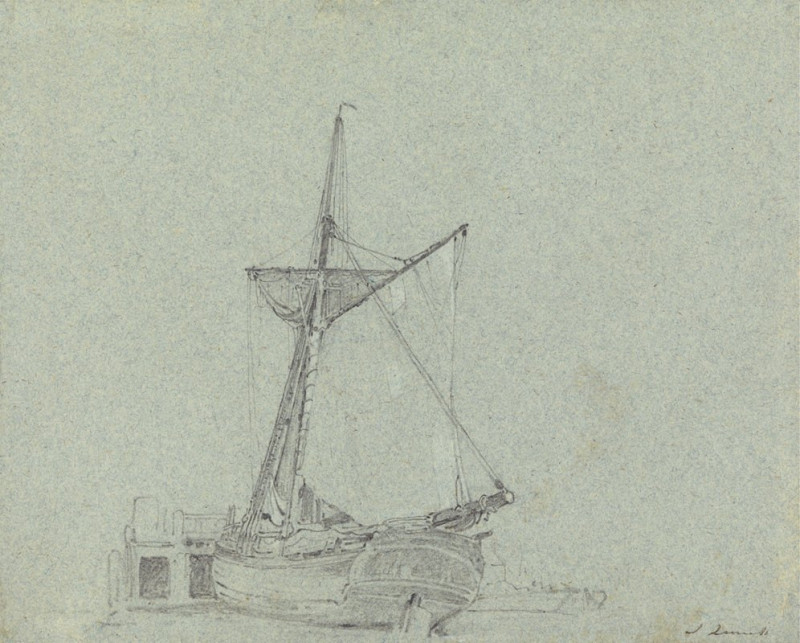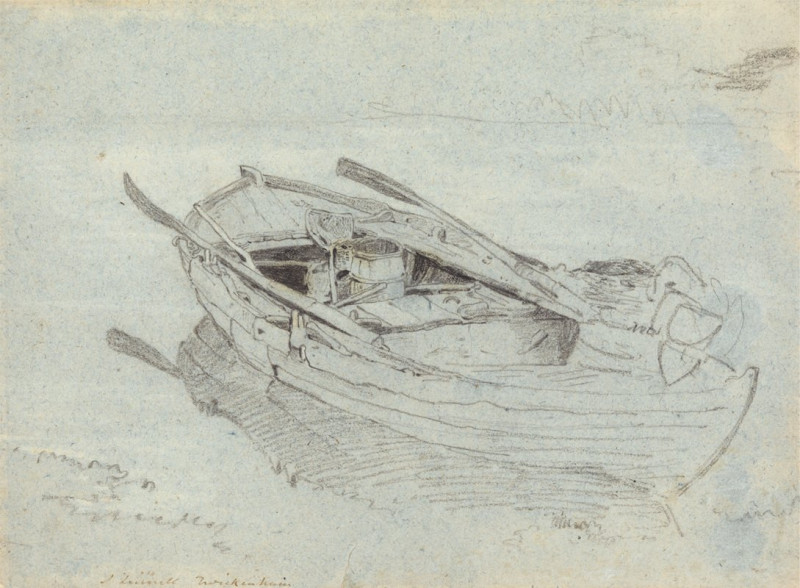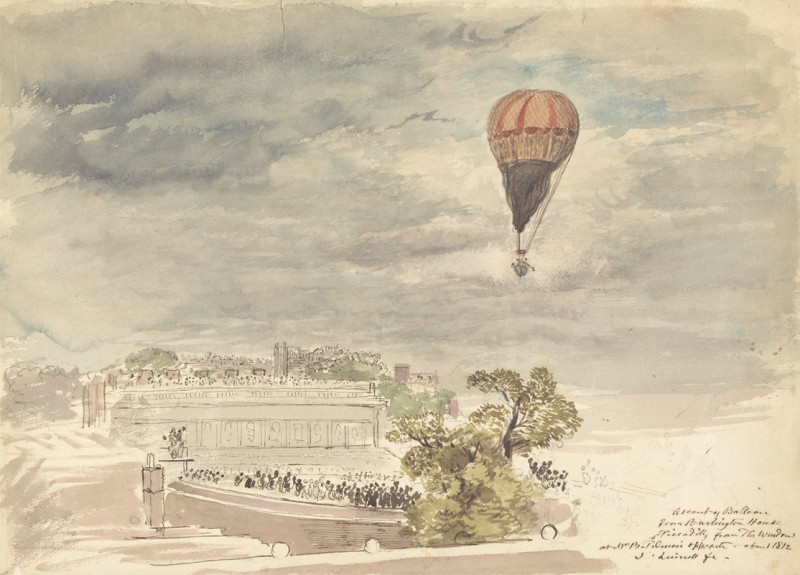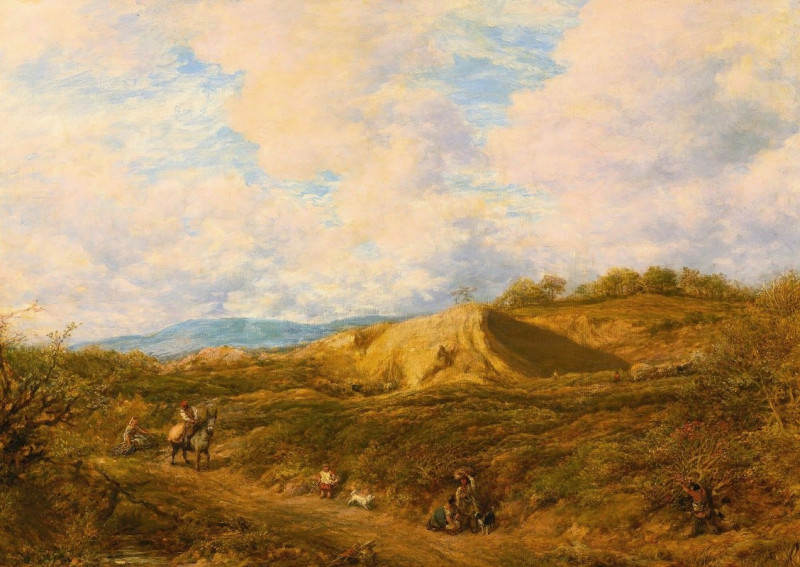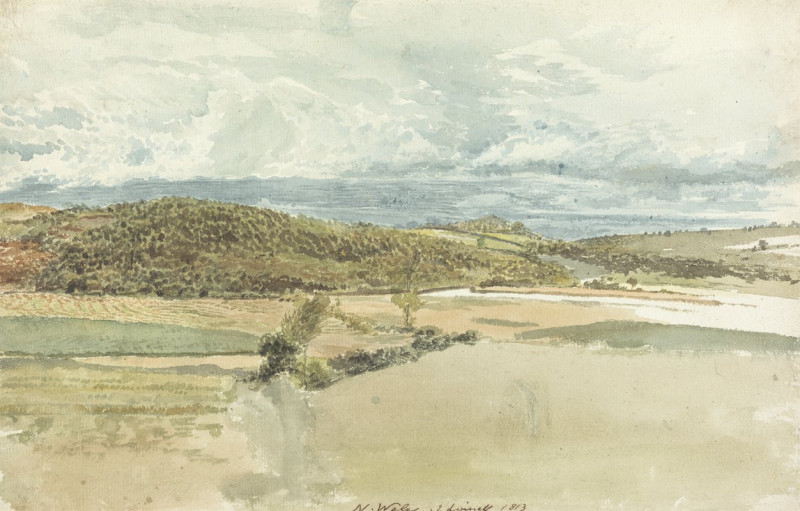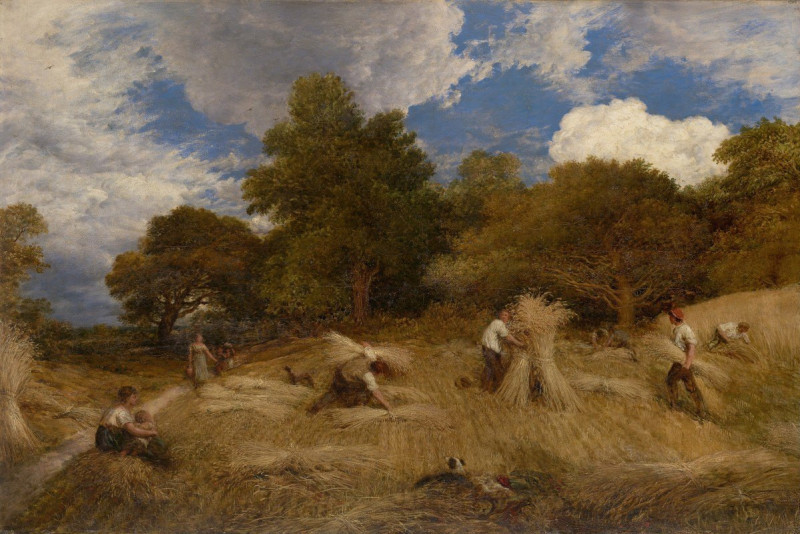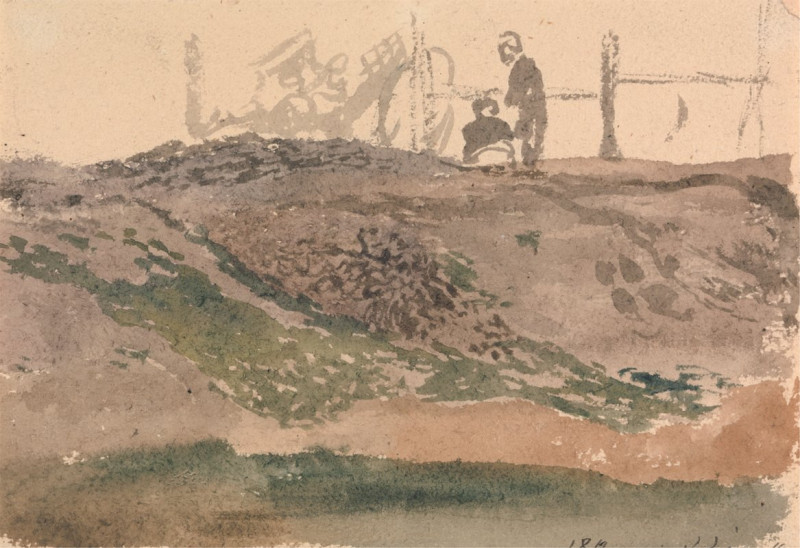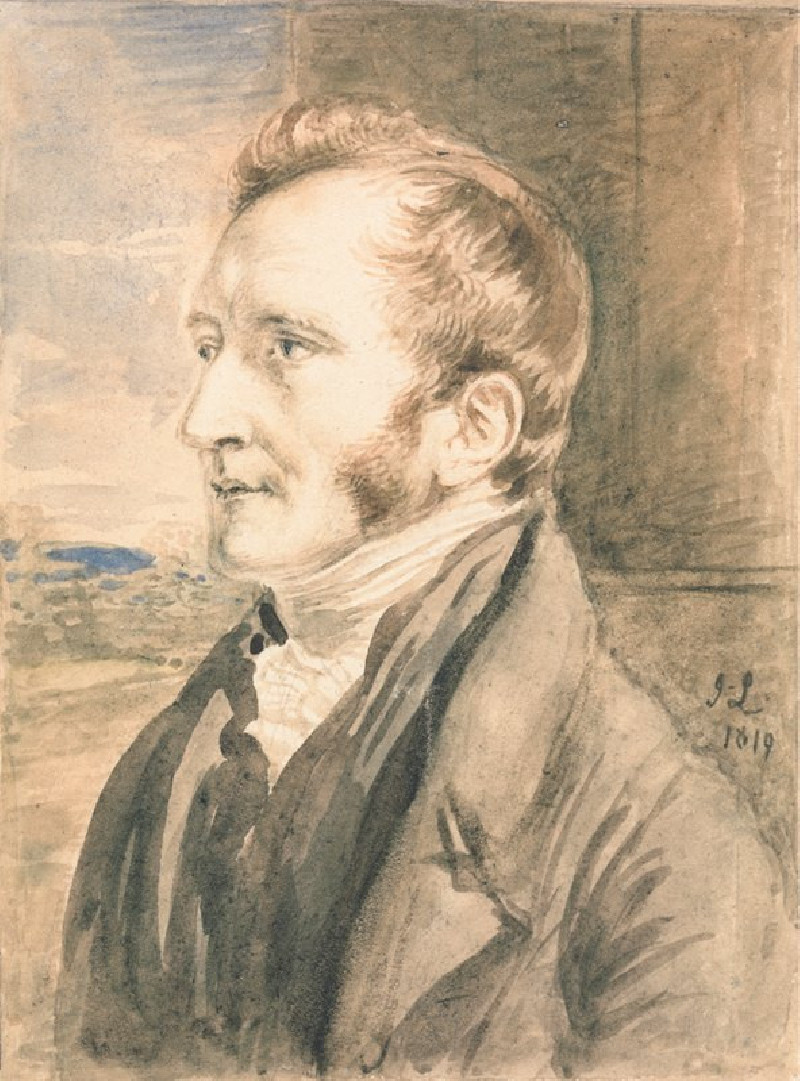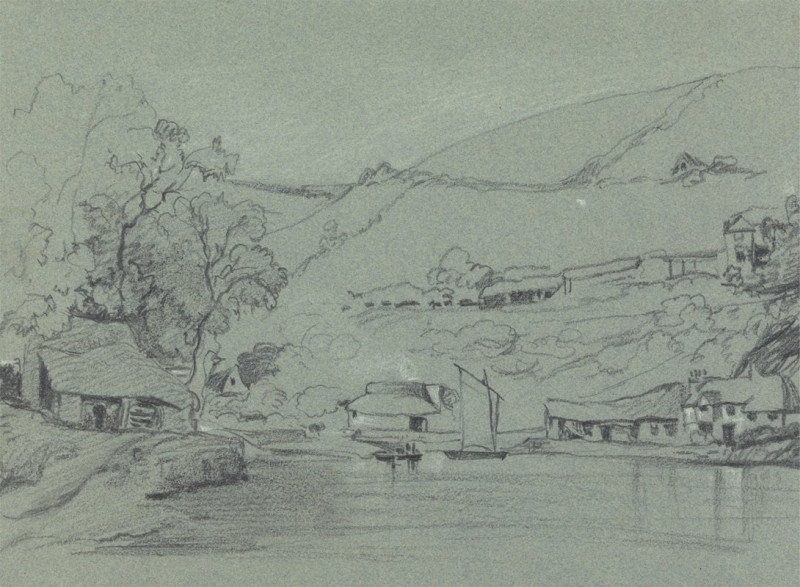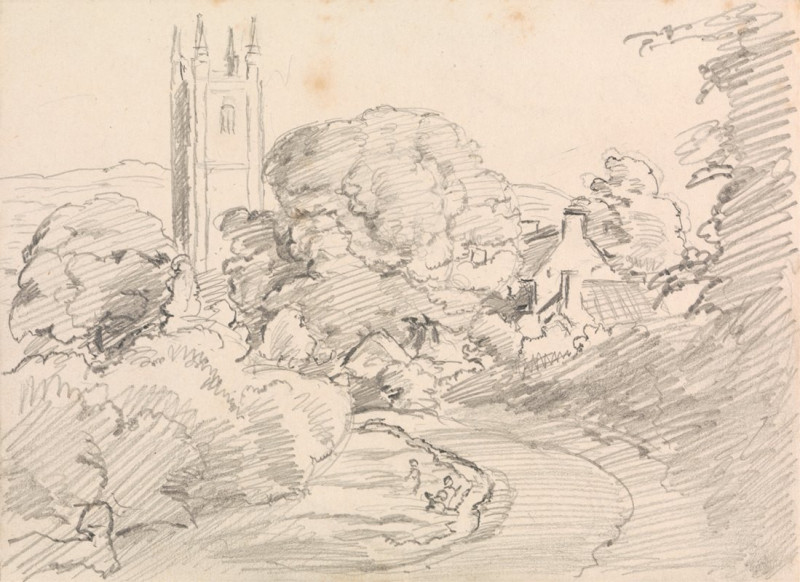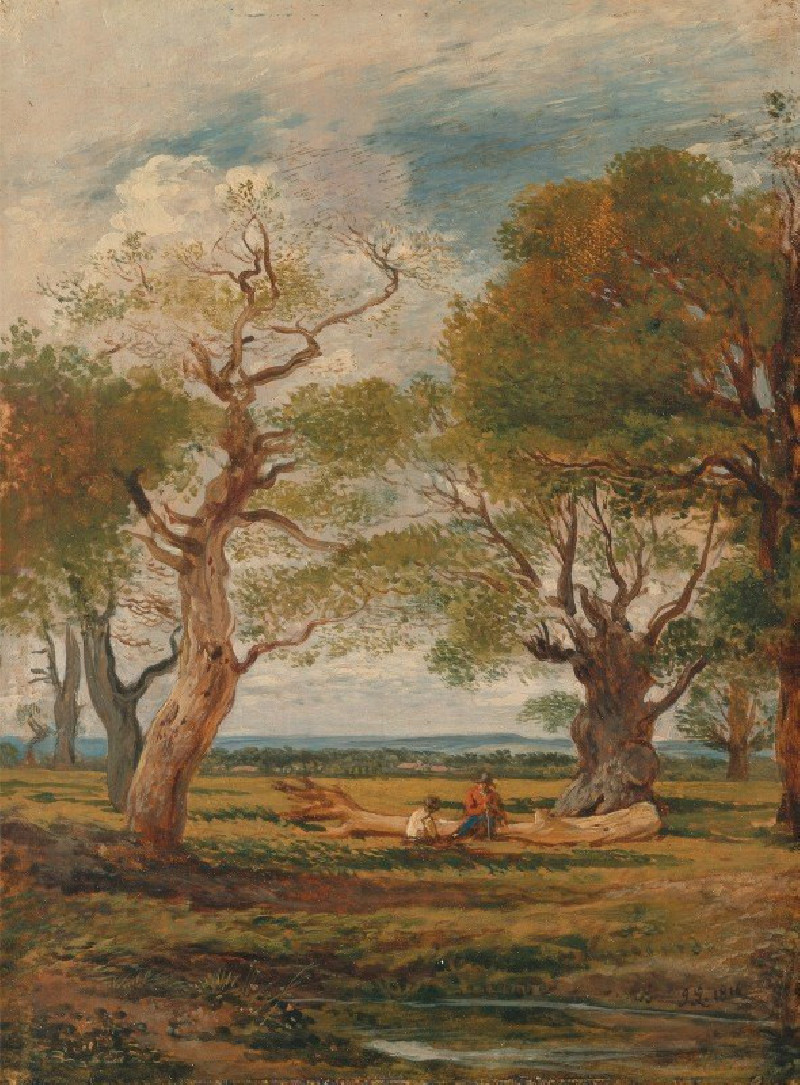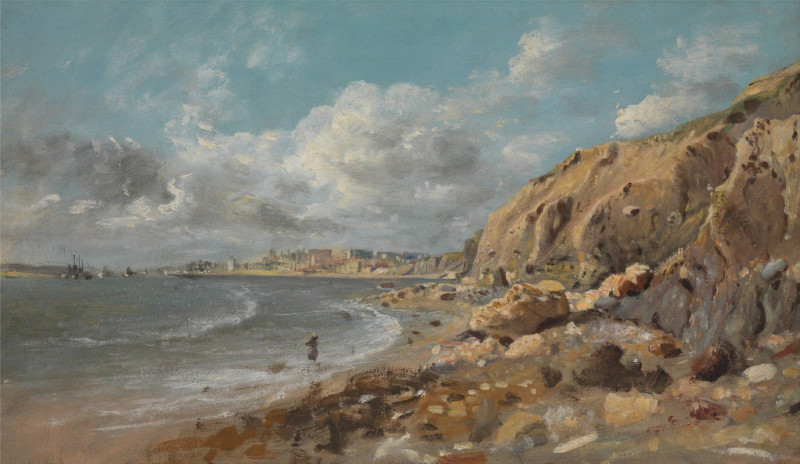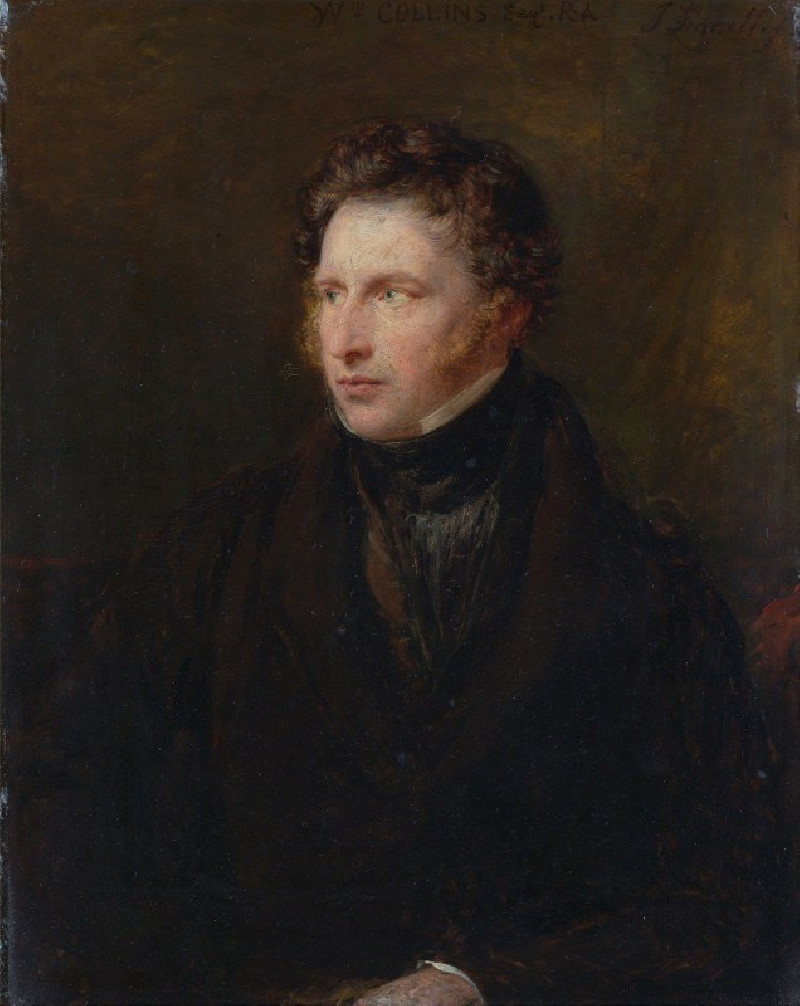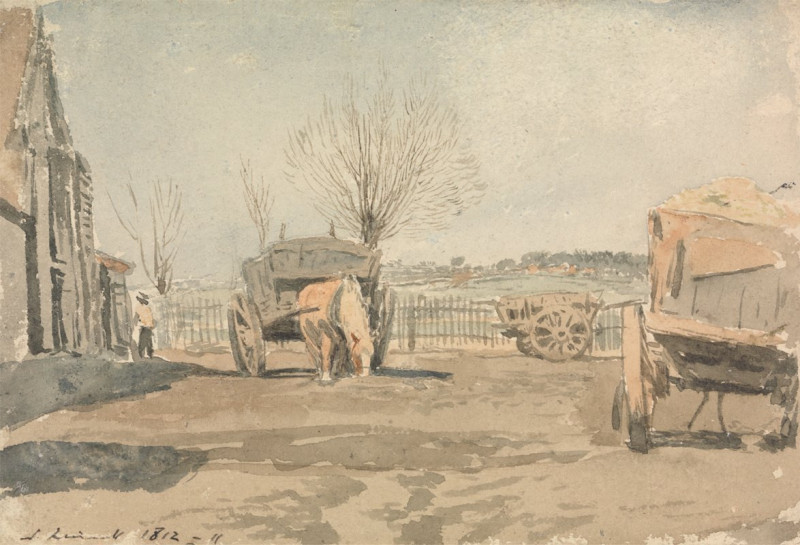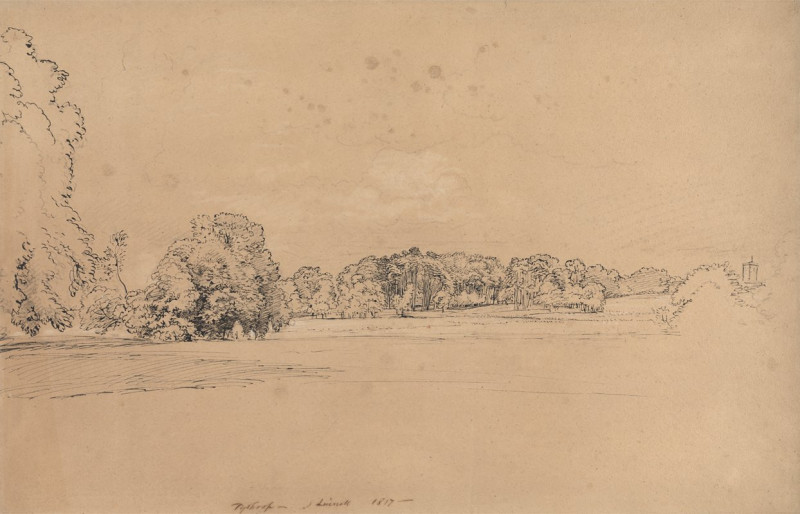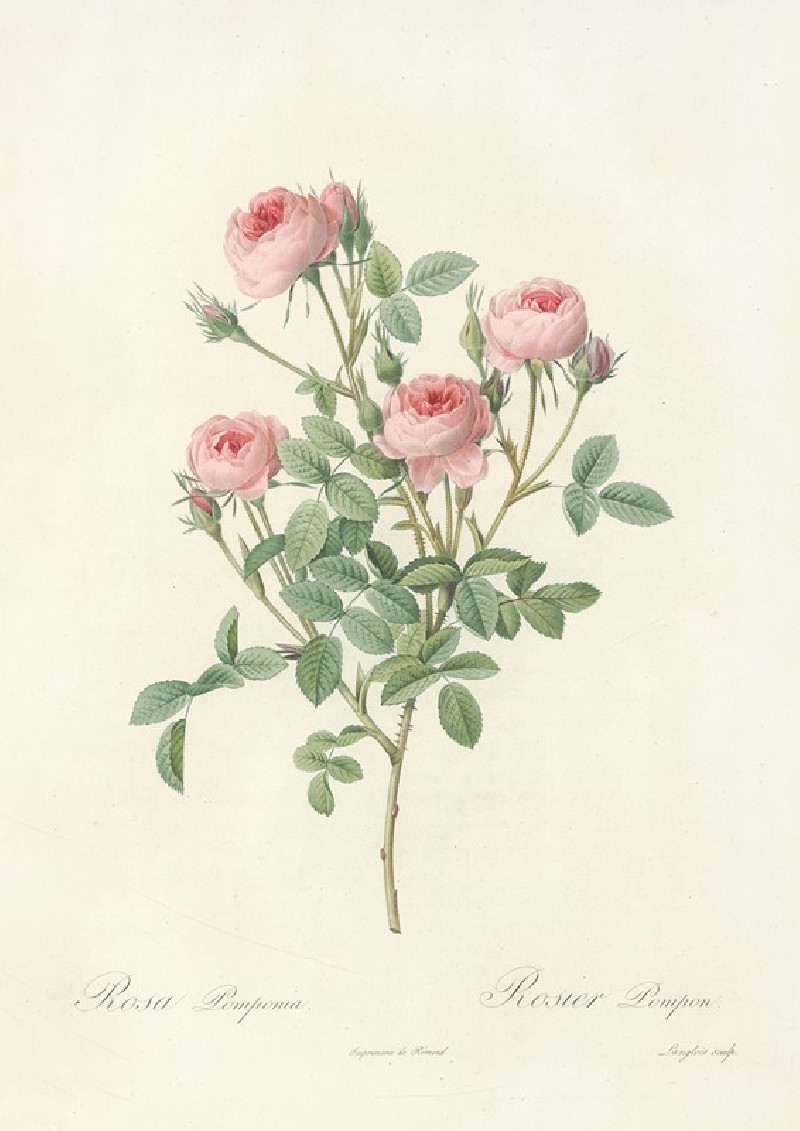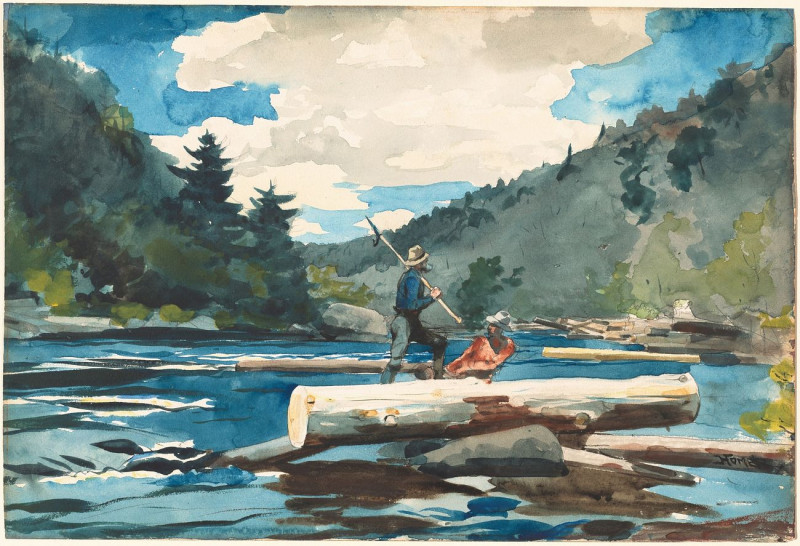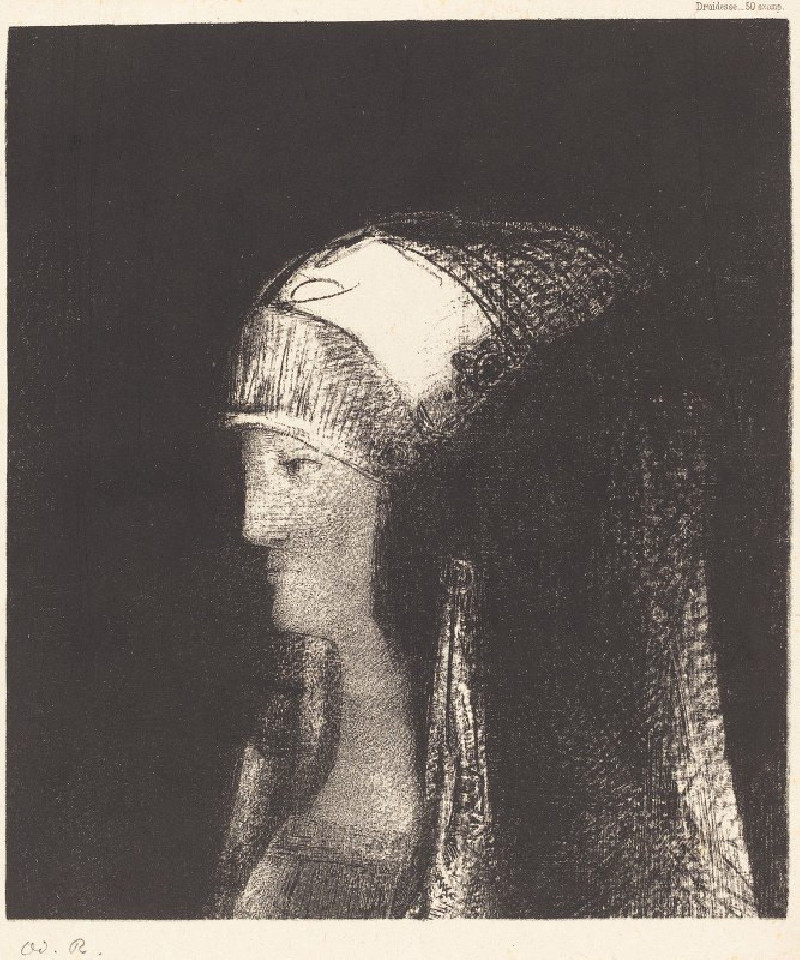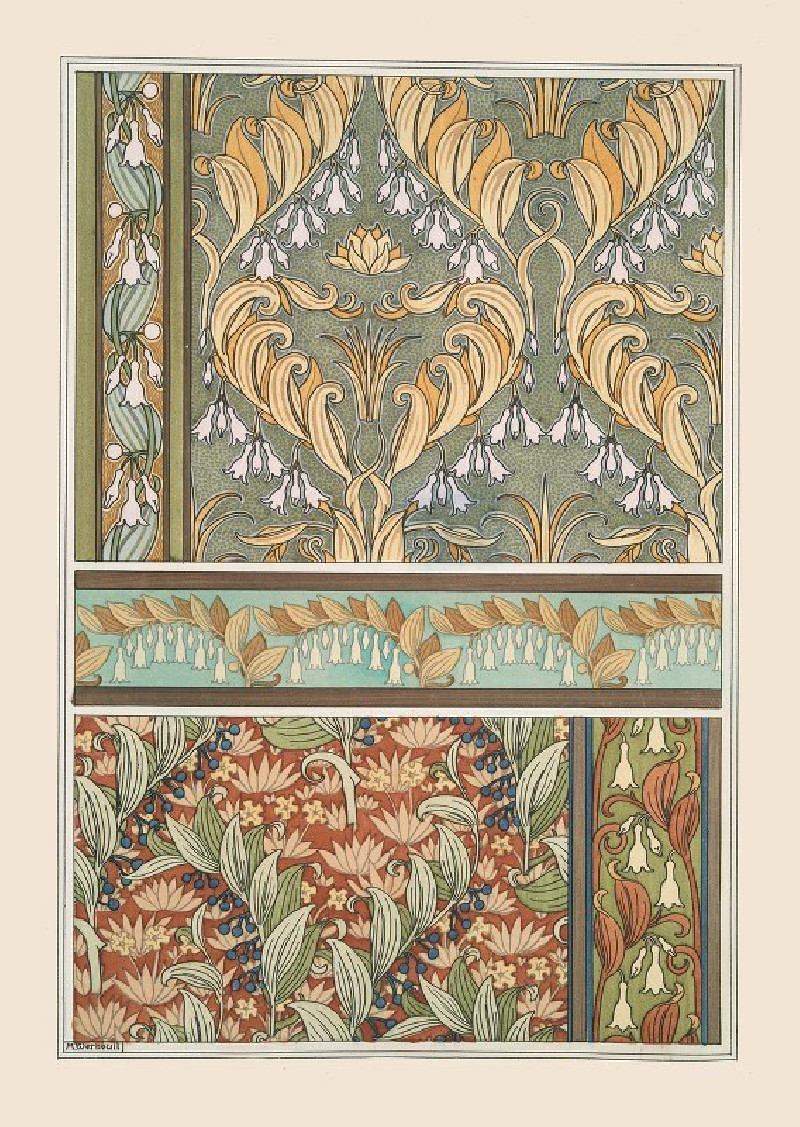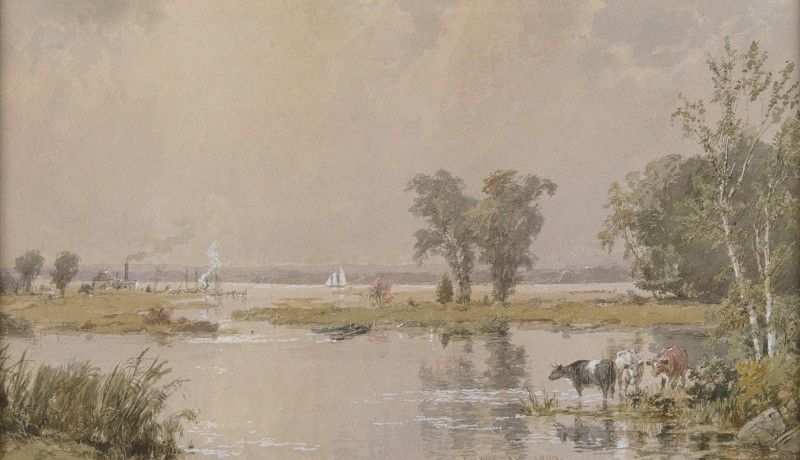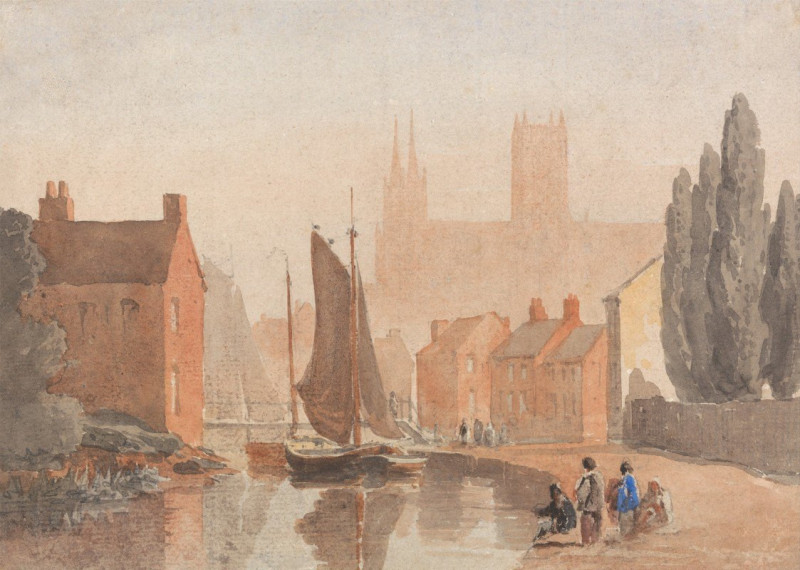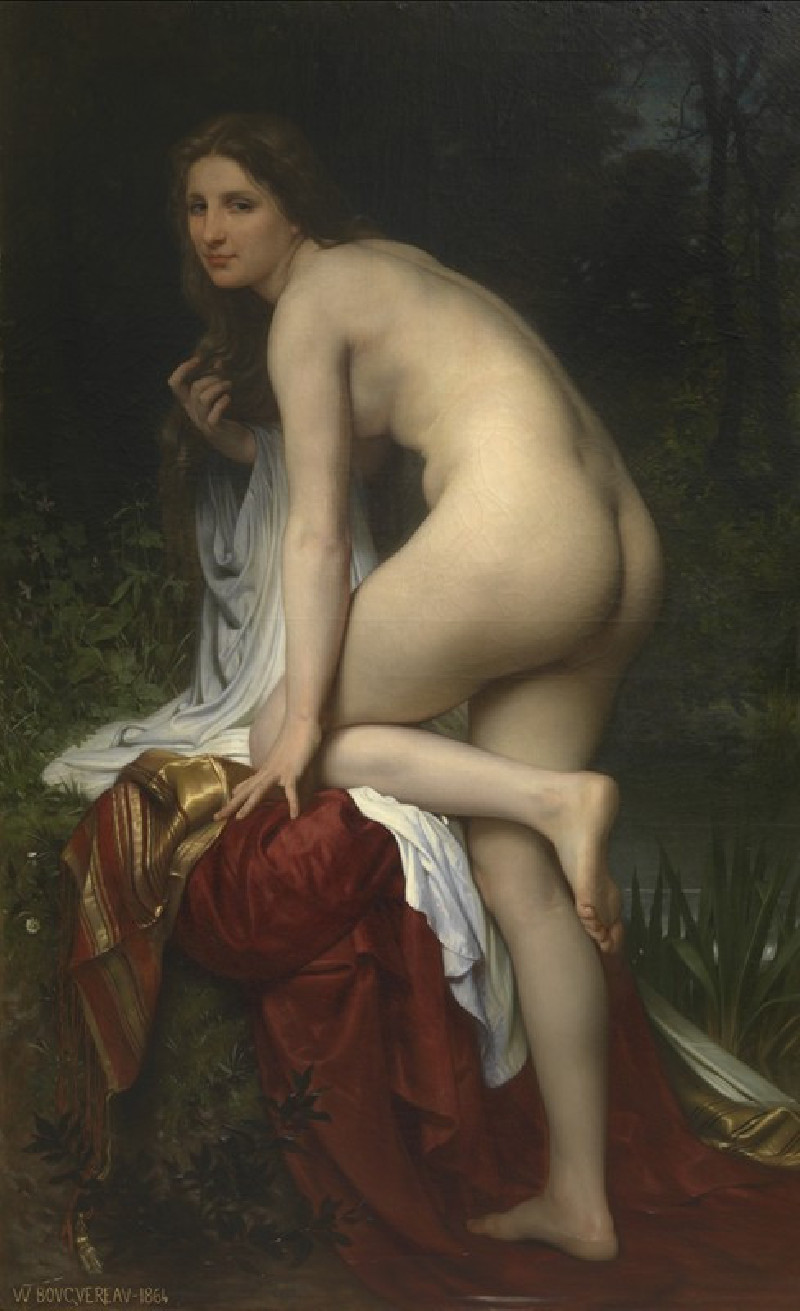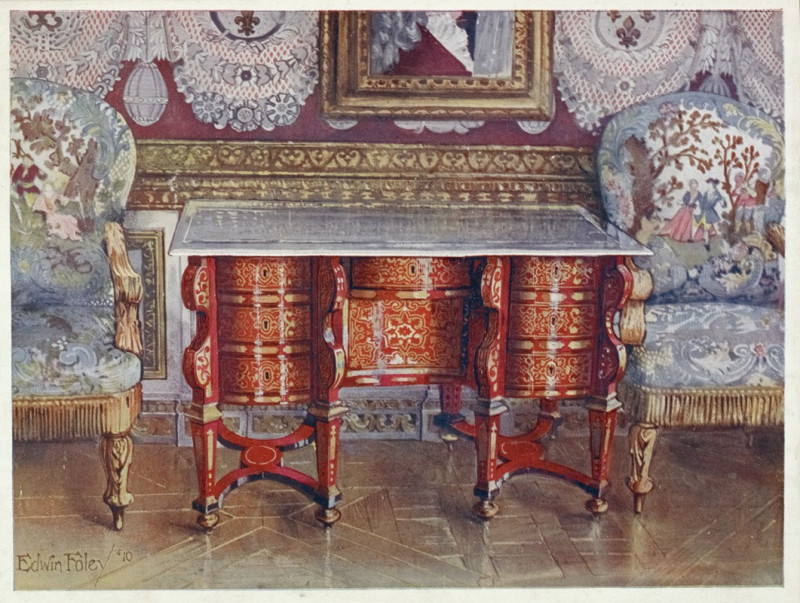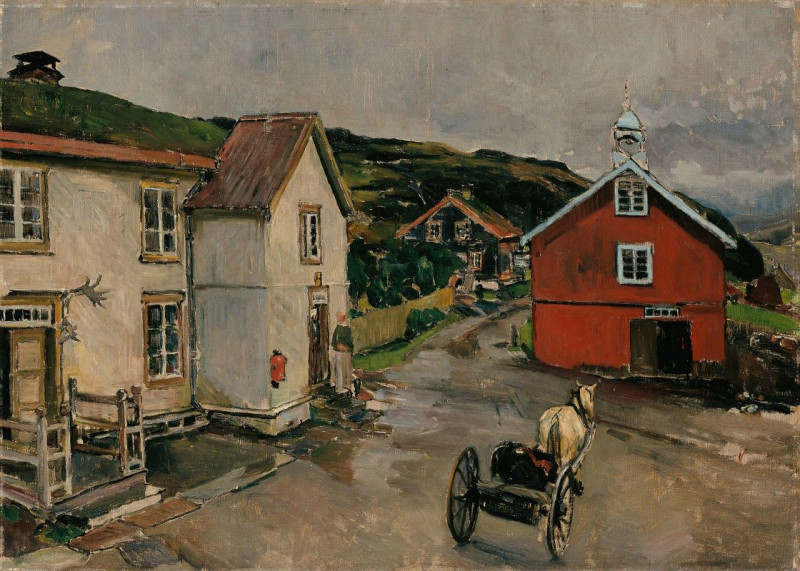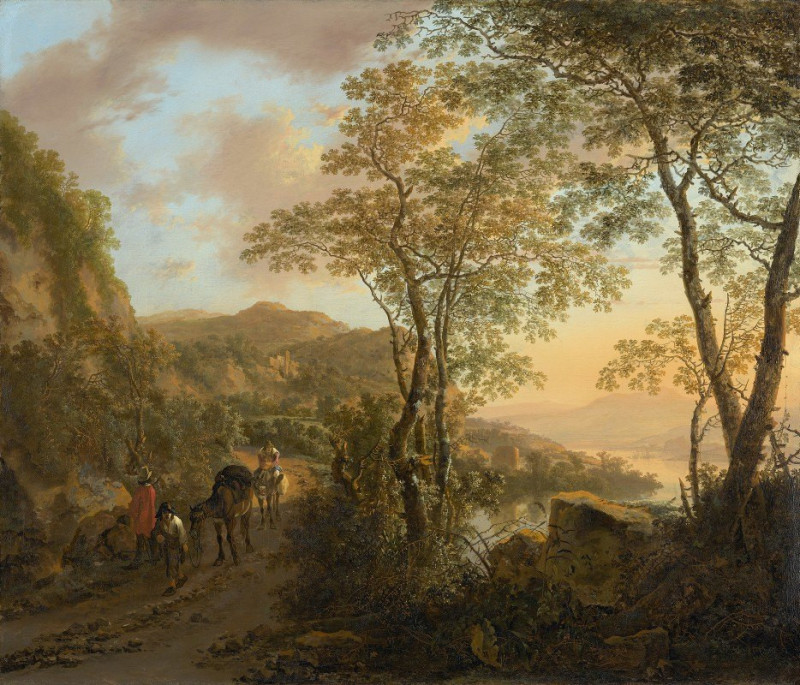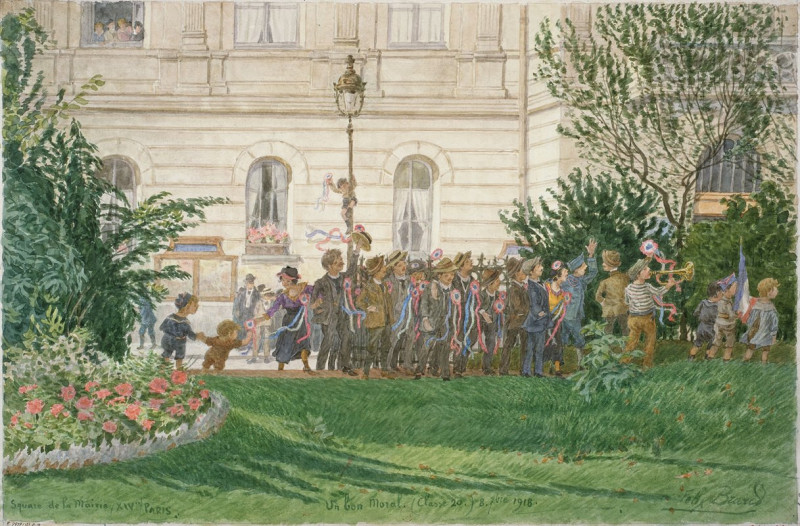Millbank (1806)
Technique: Giclée quality print
Recommended by our customers
More about this artwork
"Millbank (1806)" by John Linnell invites viewers into a serene, yet keenly observed riverside scene, capturing a moment of everyday life in the early 19th century. This delicate sketch, rich in detail and subtle intricacy, depicts a bustling but tranquil riverbank, hinting at the rhythms of daily labor and leisure that characterized the era.The artwork presents a variety of elements that draw the eye, encouraging a deeper examination of the scene. Dominated by soft, refined pencil lines, the composition includes a gently flowing river on which boats are moored, possibly indicating a bustling trade route or a favored fishing spot. The figures, sketched with minimal yet expressive strokes, appear engaged in their tasks, contributing to the sense of a living, active community. To the left, a figure dressed in robes is given prominence through its isolation and more detailed depiction, which might suggest a specific role or significance within this community.Surrounding the central activities are structures that resemble warehouses or simple dwellings, their sharp, vertical lines contrasting with the organic forms of the trees and the river. These man-made elements speak to the transformation and utilization of the natural landscape for human needs, a common theme in Linnell’s work, reflecting the relationship between man and nature."Millbank (1806)" not only captures a snapshot of life at Millbank but also subtly conveys the transitional nature of the period, bridging the rural past and the increasingly industrialized future.
Delivery
Returns
John Linnell was an English engraver, and portrait and landscape painter. He was a naturalist and a rival to the artist John Constable. He had a taste for Northern European art of the Renaissance, particularly Albrecht Dürer. He also associated with Edward Thomas Daniell, and with William Blake, to whom he introduced the painter and writer Samuel Palmer and others.


